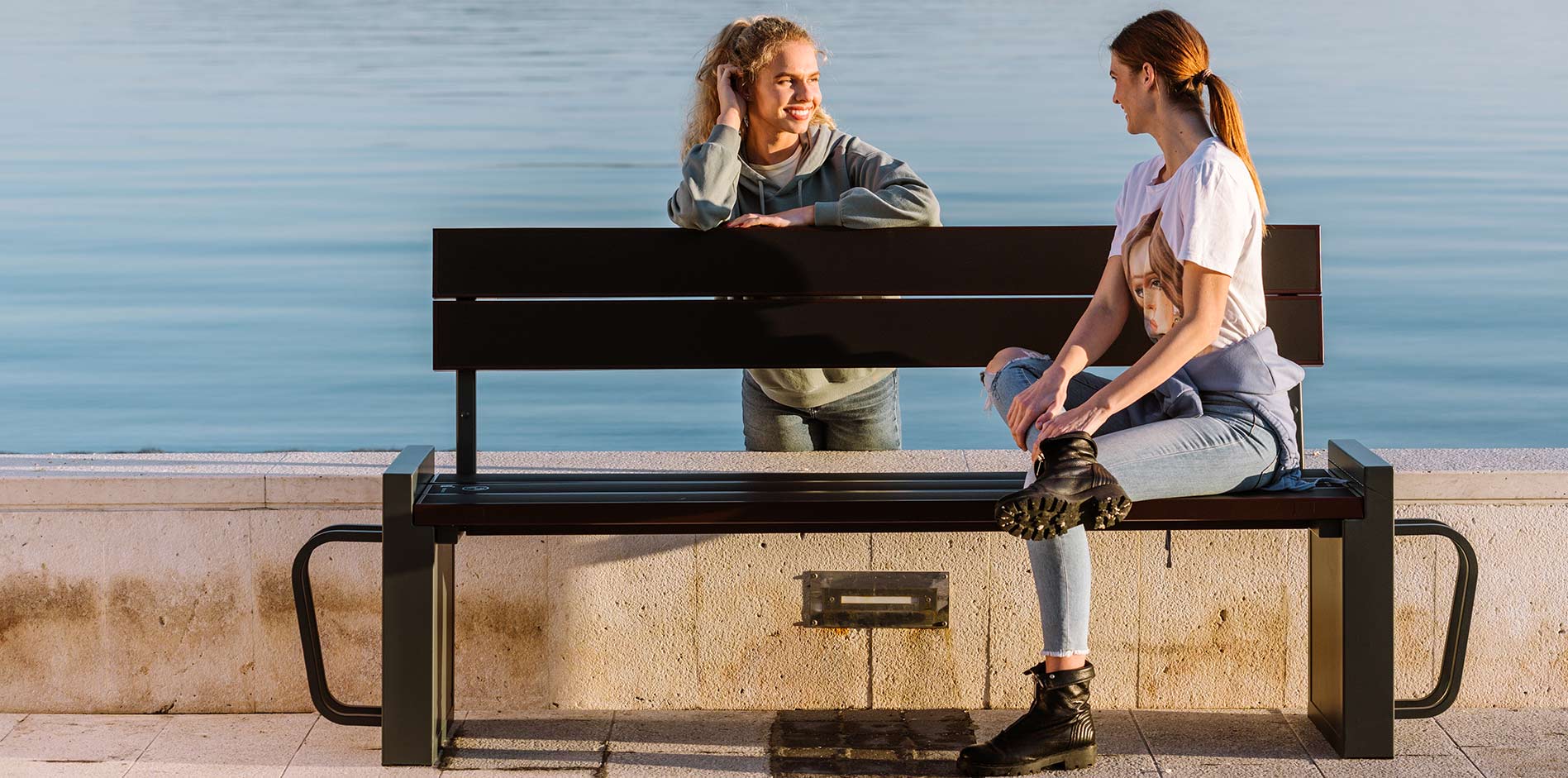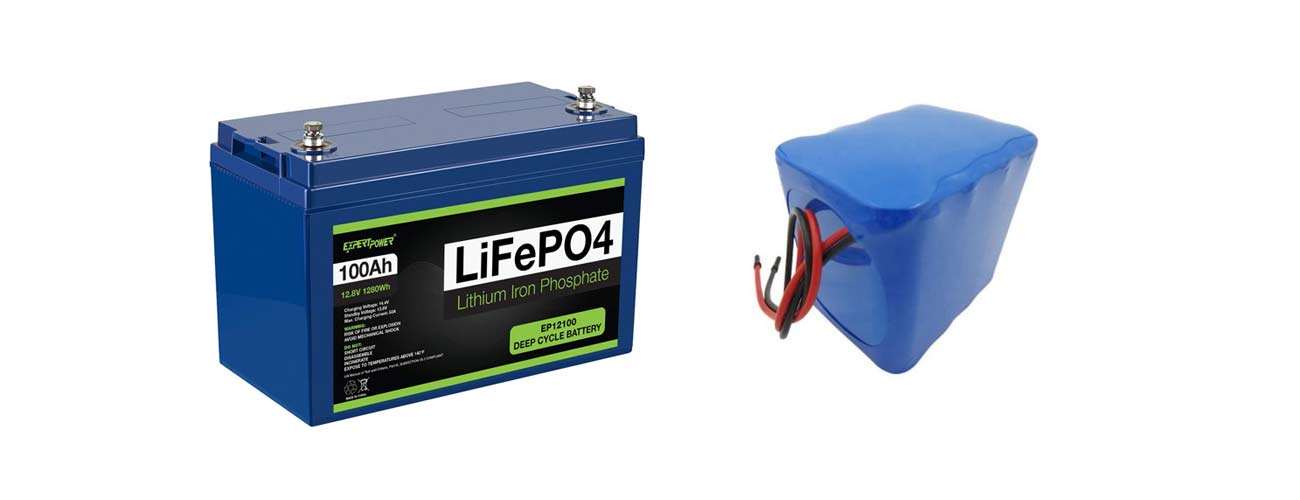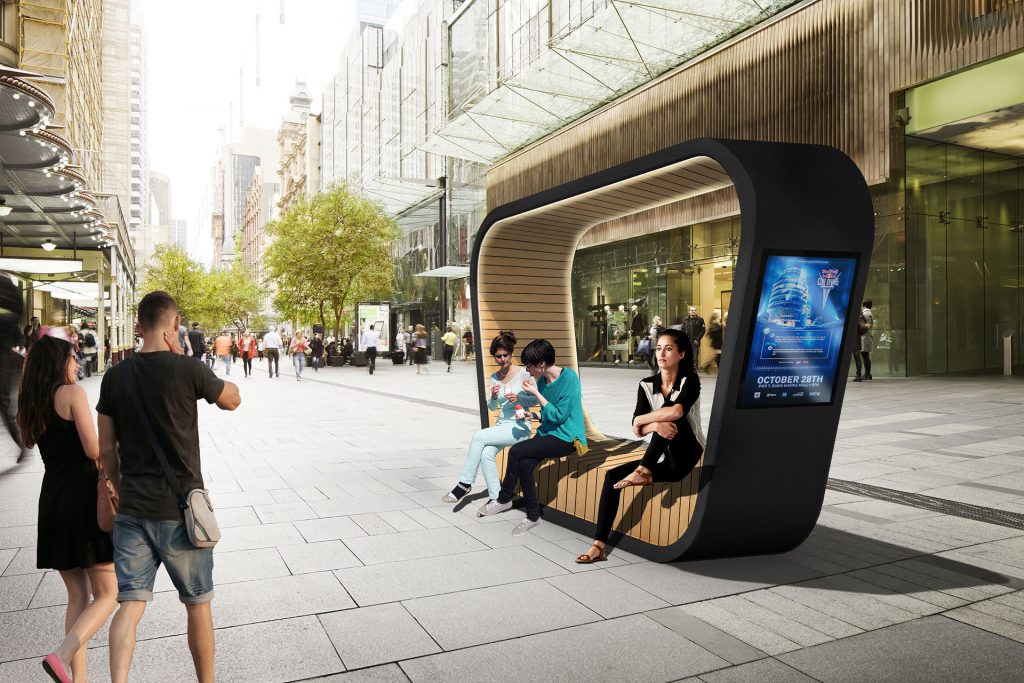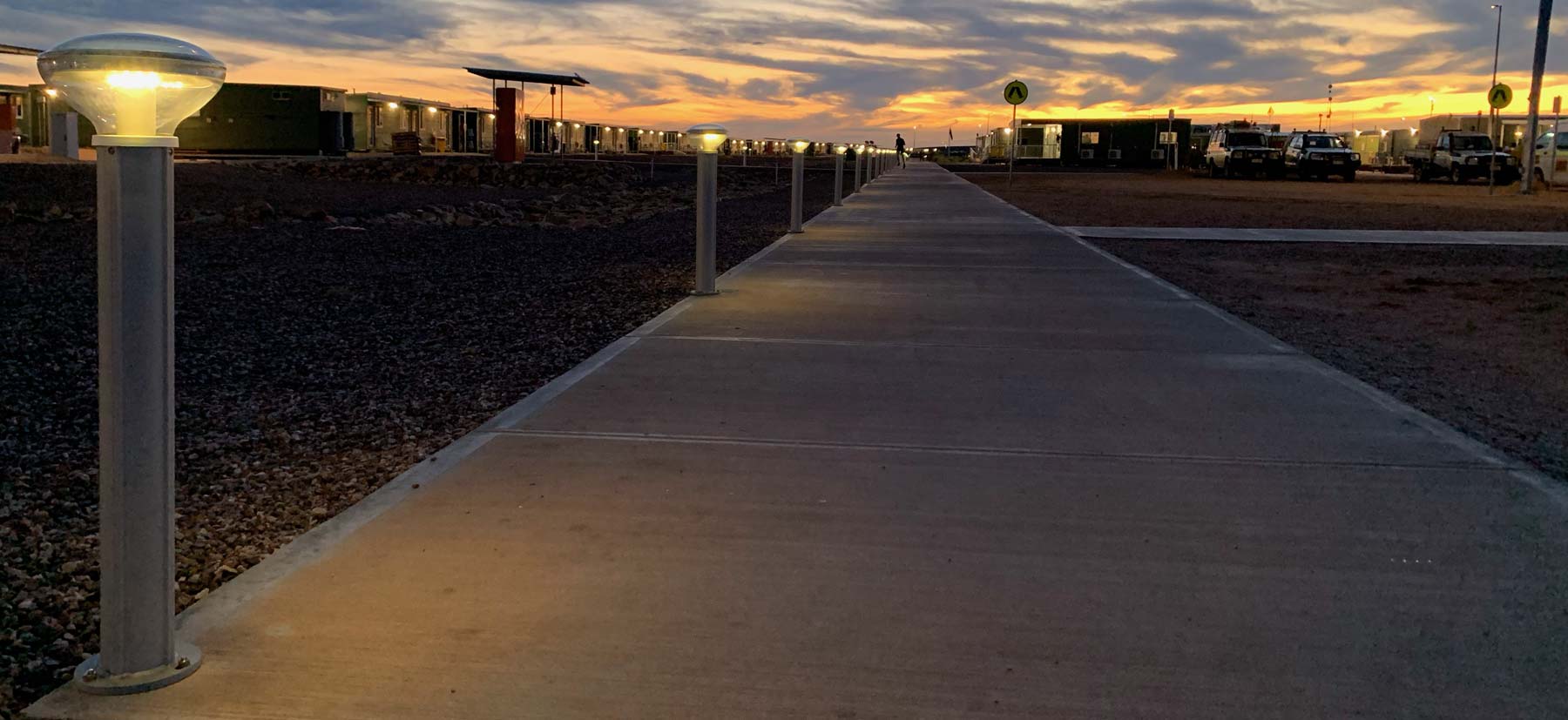A lot of solar benches can look quite similar on first glance, so before deciding on what bench to purchase, it’s worth spending time investigating all aspects of a bench – its construction materials, features, build quality, capability etc. Here’s some of the main factors to consider.
Material of construction
As the benches will be fully exposed to the weather 365 days of the year, and subject to potentially rough treatment by users, they need to be both resistant to weather conditions and also to wear and tear. Most benches are constructed of mild steel, which for preference should be galvanized and then powder coated. In locations subject to more severe weather conditions, stainless steel would be the preferred material. For benches which have tabletops or solid seats, the option is normally natural wood or composite wood. Wood of course will naturally weather to a silvery grey color over time, while composite wood is generally less affected by weather conditions typically will only fade about 5 to 10%, mostly in the first year. Natural wood options may be softwood or hardwood, but in either case you need to make sure it’s a durable species or else you will need to apply a protective coating at regular intervals.
Build quality can vary quite significantly between makers but unfortunately this is difficult to evaluate in advance, unless the supplier has a demonstration model in a showroom.
Solar capacity
The power generating capacity of any solar bench is basically constrained by the area available to incorporate solar cells. And while the stated solar capacity is a relatively simple means of comparing the power that can be generated by a solar bench, there will be some differences in quality between solar cells from different makers. But perhaps the most significant factor is whether a single solar cell is provided or whether multiple cells are provided. If only a single cell is used on a solar bench where the solar cells are located on the seating area and even if only a part of the bench is covered by a seated person, then the entire solar cell will not charge.
So for benches with solar cells on the seating area, the best benches like the Photon solar bench seat will have at least two, and ideally three or more independently connected solar panels, so if a portion of one solar cell is shaded, the other two cells will still be generating some power.
Battery capacity
Battery capacity will depend on a number of factors - the geographical latitude and hence the number of daylight hours available for charging cells throughout the year, the expected usage of the solar bench, the size of the solar panels, the extent of cloud cover during the year, whether ancillary power consuming devices like lights are connected and even the space available to house the batteries. In many cases, an extra large battery may simply be a waste of money if the bench is not used much or there are long daylight hours during the normal seasonal use of the bench.
Remote monitoring & Control
If a number of solar benches are being installed and monitored by a single authority, the ability to monitor the state of the benches at any time can be exceptionally useful. The more sophisticated benches have the ability to access a range of data from any location. This data can typically include the state of the battery, the power being supplied from the solar cells, the number of users actively charging equipment from the bench, the Wi-Fi usage, local temperature, humidity and other environmental measurements. Such remote monitoring makes it easy to be alerted to any issues with the electrical components of the solar bench and avoids relying on the public to inform the bench owner of problems, or worse, having a bench out of action for a long period without being aware of the fact.
Ambient Lighting
For benches which have solar panels on the seating area, generally some form of ambient lighting is provided on the underside of the seat. There may be the option to have different colors of LED lighting or perhaps strip lighting around the edge of the bench to define it more precisely, both of which can be controlled either by setting the parameters at the bench itself, or more ideally by remote dashboard.
Light Controllers
To increase the visibility of a solar bench, and to provide light for working or dining at a picnic table style of solar workbench, either an ambient light or overhead light is generally provided. The solar controllers in benches will probably incorporate at least a very basic method of controlling the on/off time of any light, however in the most simplest of cases, it is simply operating on a day/night cycle. The better option is for the light to controlled by a timer or even a proximity sensor which might increase the light level from a nominal level to a higher level when a person approaches. For most benches the settings can only be controlled from the bench itself. For more sophisticated solar benches it is possible to adjust the on/off time of any light from any remote location.
Fan cooled seats
In midsummer, the surface of solar benches which have solar panels on the seating area can get quite hot due to the black surface of the panels. On the more sophisticated solar benches, cooling fans operated by a thermostat can provide some cooling effect. Ideally, the airflow should be between the glass or acrylic surface and the actual solar panel, but for simplicity, most benches that provide cooling fans simply direct the cooler air to the underside of the solar panel. Fans can be just a simple single fan or up to 4 fans on some models.
Sensors
Although the benefit of incorporating environmental sensors within benches may be somewhat unclear, some solar benches incorporate sensors to measure such factors as temperature and humidity or even sensors to monitor pollutants in the air. The most sophisticated benches will allow the owner of the bench to access historical data in the form of charts from any remote location. A few benches even have the ability to track the number of people charging phones or using the Wi-Fi connection is provided, which can be very useful in evaluating the benefits of installing solar benches in specific locations. This can be useful for example to locate the most desirable locations to install solar benches.
Wi-Fi capability
Wi-Fi modems can be installed in practically any solar bench to provide a Wi-Fi hotspot. The usefulness of this feature is probably less significant these days with most people having access to internet on their Smart phone, but with benches that provide tables and even a 120V power outlet that can be used to charge laptops, a Wi-Fi hotspot capability can be more useful. Of course the provision of any Wi-Fi capability requires an active subscription with an internet a service provider. The Wi-Fi service provided by a modem with a SIM card and would typically have a range of 10 to 20 feet from the bench.
Bluetooth speakers
Bluetooth speakers are often available as an optional accessory in many solar benches to permit music to be played from a cell phone through a speaker installed in the bench. Ideally there would be some capability of controlling the maximum sound level.
Warranty
Warranty periods for solar benches are typically either one year or two years or maybe one year for the electric components and a longer period for the structural components. Depending on the bench, repairs to electrical components can often be a simple matter of replacing the main solar controller if any fault occurs.
Seat surface
For benches with solar panels on the seating area, there’s basically two options for the top surface - acrylic or tempered glass. There’s no clear-cut answer to which is the best material to use because each have their pros and cons. An acrylic surface can of course be more easily scratched than a glass surface but it can be cheaper to replace if necessary. On the other hand, a glass surface could possibly be more susceptible to damage by vandalism with the potential of much more damage occurring.
Advertising or information panels
Depending on the type of bench, advertising panels may be incorporated in the design or can possibly be supplied as an optional component. The simplest panels will simply allow a poster to be inserted behind an acrylic screen. More expensive options would permit the panel to be lit by LED lighting and even more expensive option would be to use ePaper displays which use very little power. For a full LED screen display however, external power would be required due to the extra power load necessary to operate an LED screen. Opportunities for branding and hence potential for revenue generation exist with benches that have a greater visible and flat surface area.
As you can see, there’s a lot of factors to consider when purchasing a solar bench – not just the price.






